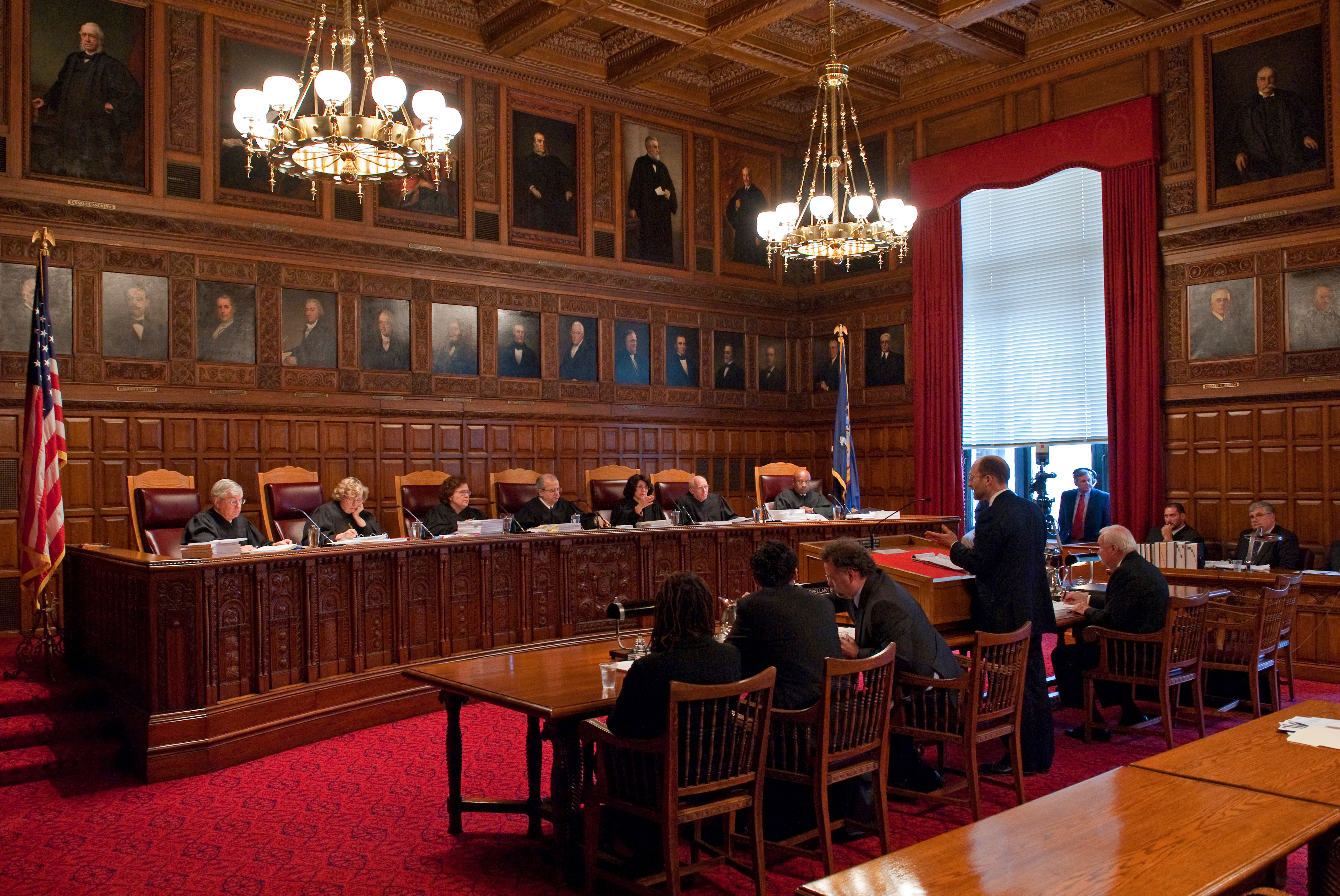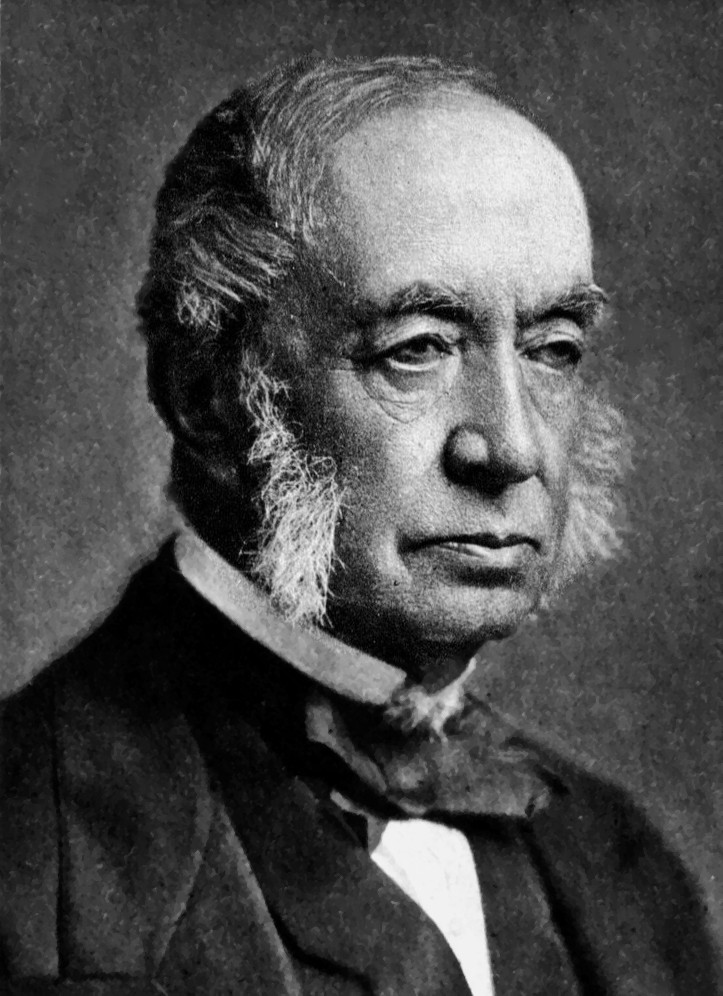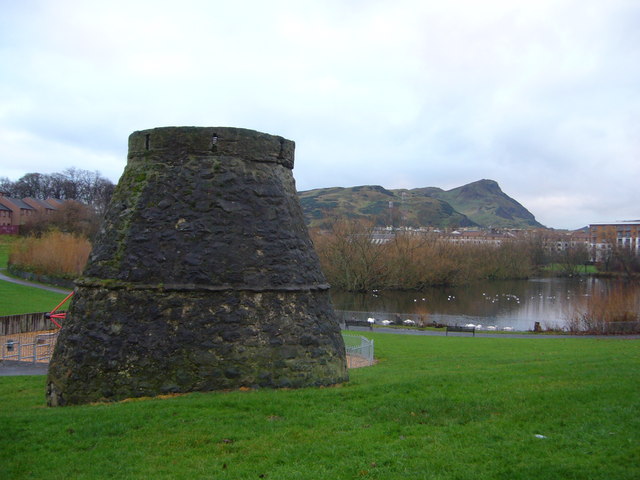|
Alexander Wood, Lord Wood
The Hon Alexander Wood of Woodcote, Lord Wood FRSE (12 November 1788 – 18 July 1864) was a 19th-century Scottish lawyer who became a Senator of the College of Justice. Life He was born on Blair Street, off the Royal Mile, Edinburgh on 12 November 1788, the son of Isabella Campbell, daughter of John Campbell of Glensaddle and Newfield, and her husband, George Wood, a surgeon. George Wood was the second son of Alexander Wood, an eminent Edinburgh surgeon. By 1800 the family was living at 6 St Andrew Square in Edinburgh's New Town. Wood was educated at the High School, Edinburgh and then studied law at the University of Edinburgh, graduating around 1808. In 1811 he qualified as an advocate and in 1815 was living and working independently at 45 Queen Street. In 1826 he was elected a Fellow of the Royal Society of Edinburgh, his proposer being James Skene of Rubislaw. In 1830 he was appointed Sheriff of Kirkcudbright and in 1841 Dean of the Faculty of Advocates. In 1842 he ... [...More Info...] [...Related Items...] OR: [Wikipedia] [Google] [Baidu] |
FRSE
Fellowship of the Royal Society of Edinburgh (FRSE) is an award granted to individuals that the Royal Society of Edinburgh, Scotland's national academy of science and letters, judged to be "eminently distinguished in their subject". This society received a royal charter in 1783, allowing for its expansion. Elections Around 50 new fellows are elected each year in March. there are around 1,650 Fellows, including 71 Honorary Fellows and 76 Corresponding Fellows. Fellows are entitled to use the post-nominal letters FRSE, Honorary Fellows HonFRSE, and Corresponding Fellows CorrFRSE. Disciplines The Fellowship is split into four broad sectors, covering the full range of physical and life sciences, arts, humanities, social sciences, education, professions, industry, business and public life. A: Life Sciences * A1: Biomedical and Cognitive Sciences * A2: Clinical Sciences * A3: Organismal and Environmental Biology * A4: Cell and Molecular Biology B: Physical, Engineering and ... [...More Info...] [...Related Items...] OR: [Wikipedia] [Google] [Baidu] |
Adam Gillies, Lord Gillies
Adam Gillies, Lord Gillies (1760–1842) was a Scottish judge. Life He was born in Brechin, Forfarshire on 29 April 1766, the son of Margaret (née Smith) and Robert Gillies, he was the younger brother of historian John Gillies. Gillies was admitted an advocate on 14 July 1787. From 1806, he was the sheriff-depute of Kincardineshire. From 1811 to 1842, he was a Senator of the College of Justice, based in Edinburgh. In the 1830s he is listed as living at 16 York Place in Edinburgh's New Town. In the late 18th century he was a member of the Crochallan Fencibles, a club which met at Dawney's Tavern on Anchor Close in Edinburgh. Gillies married Elizabeth Carnegy, a Unitarian, and from 1811 their nieces Margaret (1803-1887) and Mary Gillies (1800-1870), came to live with them from London. The girls were educated by Lord and Lady Gillies and introduced into Edinburgh society. During their time in Edinburgh the two girls were introduced to Thomas Southwood Smith, the powerful n ... [...More Info...] [...Related Items...] OR: [Wikipedia] [Google] [Baidu] |
19th-century Scottish Judges
The 19th (nineteenth) century began on 1 January 1801 ( MDCCCI), and ended on 31 December 1900 ( MCM). The 19th century was the ninth century of the 2nd millennium. The 19th century was characterized by vast social upheaval. Slavery was abolished in much of Europe and the Americas. The First Industrial Revolution, though it began in the late 18th century, expanding beyond its British homeland for the first time during this century, particularly remaking the economies and societies of the Low Countries, the Rhineland, Northern Italy, and the Northeastern United States. A few decades later, the Second Industrial Revolution led to ever more massive urbanization and much higher levels of productivity, profit, and prosperity, a pattern that continued into the 20th century. The Islamic gunpowder empires fell into decline and European imperialism brought much of South Asia, Southeast Asia, and almost all of Africa under colonial rule. It was also marked by the collapse of the large S ... [...More Info...] [...Related Items...] OR: [Wikipedia] [Google] [Baidu] |
Alumni Of The University Of Edinburgh School Of Law
Alumni (singular: alumnus (masculine) or alumna (feminine)) are former students of a school, college, or university who have either attended or graduated in some fashion from the institution. The feminine plural alumnae is sometimes used for groups of women. The word is Latin and means "one who is being (or has been) nourished". The term is not synonymous with "graduate"; one can be an alumnus without graduating (Burt Reynolds, alumnus but not graduate of Florida State, is an example). The term is sometimes used to refer to a former employee or member of an organization, contributor, or inmate. Etymology The Latin noun ''alumnus'' means "foster son" or "pupil". It is derived from PIE ''*h₂el-'' (grow, nourish), and it is a variant of the Latin verb ''alere'' "to nourish".Merriam-Webster: alumnus .. Separate, but from the s ... [...More Info...] [...Related Items...] OR: [Wikipedia] [Google] [Baidu] |
Lawyers From Edinburgh
A lawyer is a person who Practice of law, practices law. The role of a lawyer varies greatly across different Jurisdiction, legal jurisdictions. A lawyer can be classified as an advocate, attorney at law, attorney, barrister, canonist, canon lawyer, civil law notary, counsel, counselor, solicitor, legal executive, or public servant — with each role having different functions and privileges. Working as a lawyer generally involves the practical application of abstract legal theories and knowledge to solve specific problems. Some lawyers also work primarily in advancing the interests of the law and legal profession. Terminology Different legal jurisdictions have different requirements in the determination of who is recognized as being a lawyer. As a result, the meaning of the term "lawyer" may vary from place to place. Some jurisdictions have two types of lawyers, barrister and solicitors, while others fuse the two. A barrister (also known as an advocate or counselor in some j ... [...More Info...] [...Related Items...] OR: [Wikipedia] [Google] [Baidu] |
1864 Deaths
Events January–March * January 13 – American songwriter Stephen Foster ("Oh! Susanna", "Old Folks at Home") dies aged 37 in New York City, leaving a scrap of paper reading "Dear friends and gentle hearts". His parlor song " Beautiful Dreamer" is published in March. * January 16 – Denmark rejects an Austrian-Prussian ultimatum to repeal the Danish Constitution, which says that Schleswig-Holstein is part of Denmark. * January 21 – New Zealand Wars: The Tauranga campaign begins. * February – John Wisden publishes '' The Cricketer's Almanack for the year 1864'' in England; it will go on to become the major annual cricket reference publication. * February 1 – Danish-Prussian War (Second Schleswig War): 57,000 Austrian and Prussian troops cross the Eider River into Denmark. * February 15 – Heineken brewery founded in Netherlands. * February 17 – American Civil War: The tiny Confederate hand-propelled submarine ''H. L. Hunley'' s ... [...More Info...] [...Related Items...] OR: [Wikipedia] [Google] [Baidu] |
1788 Births
Events January–March * January 1 – The first edition of ''The Times'', previously ''The Daily Universal Register'', is published in London. * January 2 – Georgia ratifies the United States Constitution, and becomes the fourth U.S. state under the new government. * January 9 – Connecticut ratifies the United States Constitution, and becomes the fifth U.S. state. * January 18 – The leading ship (armed tender HMS ''Supply'') in Captain Arthur Phillip's First Fleet arrives at Botany Bay, to colonise Australia. * January 22 – the Congress of the Confederation, effectively a caretaker government until the United States Constitution can be ratified by at least nine of the 13 states, elects Cyrus Griffin as its last president.''Harper's Encyclopaedia of United States History from 458 A. D. to 1909'', ed. by Benson John Lossing and, Woodrow Wilson (Harper & Brothers, 1910) p167 * January 24 – The La Perouse expedition in the '' Astrolabe'' and '' Boussole'' ... [...More Info...] [...Related Items...] OR: [Wikipedia] [Google] [Baidu] |
Alexander Wood (physician)
Alexander Wood (10 December 181726 February 1884), was a Scottish physician. He invented the first true hypodermic syringe. He served as President of the Royal College of Physicians of Edinburgh from 1858 to 1861. Life The son of Dr James Wood and his wife Mary Wood (James' cousin), Alexander was born on 10 December 1817 in Cupar, Fife. The family moved to Edinburgh around 1825, where they lived at 19 Royal Circus in the Second New Town. He was educated at Edinburgh Academy from 1825 to 1832, and then studied Medicine at the University of Edinburgh ( MD 1839). From qualification he worked at the Stockbridge Dispensary near his Edinburgh home. By 1840 he was working as a surgeon and living in his late father's house at 19 Royal Circus. From 1841 he lectured in Medicine at the Extra Mural School connected to Edinburgh University. In 1853, he invented the first hypodermic needle that used a true syringe and hollow needle. Wood referred to his invention as "subcutaneous" rath ... [...More Info...] [...Related Items...] OR: [Wikipedia] [Google] [Baidu] |
Sir William Forbes, 6th Baronet
Sir William Forbes, 6th Baronet of Monymusk and Pitsligo, usually known as William Forbes of Pitsligo (1739–1806), was a Scottish banker. He was known also as an improving landlord, philanthropist, and writer. Life and career He was born in Edinburgh on 5 April 1739. His father Willam Forbes, heir to a Nova Scotia baronetcy, was an advocate; the family estate at Monymusk in Aberdeenshire had been sold by his grandfather. Forbes's maternal grandmother was a sister of Alexander Forbes, 4th Lord Forbes of Pitsligo, whose activities in 1745 led to the forfeiture of his estate, also in Aberdeenshire. His mother, Christian Forbes, was a member of a collateral branch of the Monymusk family, and was left a widow when William, the elder of two surviving boys from a family of five, was only four years old. She settled in Aberdeen in 1745 for the education of her children, who were brought up as Scottish episcopalians. The younger boy died in 1749, and in October 1753 Lady Forbes, wi ... [...More Info...] [...Related Items...] OR: [Wikipedia] [Google] [Baidu] |
John Inglis, Lord Glencorse
Rt Hon John Inglis, Lord Glencorse FRSE DCL LLD (21 August 1810 – 20 August 1891) was a Scottish politician and judge. He was Lord President of the Court of Session (1867–1891).John Inglis Lord Glencorse University of Glasgow (see "summary" for birth/death dates) Life The youngest son of Maria Moxham Passmore and Rev John Inglis DD (1761–1834), minister of Old , Inglis was born on 21 August 1810 at 43 G ...[...More Info...] [...Related Items...] OR: [Wikipedia] [Google] [Baidu] |
Inchyra
Inchyra (; gd, An Innis Iarach "the west isle") is a hamlet in the Carse of Gowrie in Scotland. It lies on the northern bank of the River Tay near Perth and is notable particularly for a number of archaeological finds made in the immediate vicinity. Geography Inchyra lies on the northern bank of the River Tay to the south of the A90. It is approximately east of Perth and west-south-west of Dundee. It is situated close to St Madoes. It is the only L-shaped village in Scotland. It is surrounded by farmland. Toponymy In common with a number of villages in the Carse of Gowrie, Inchyra has the Celtic placename element ''innis'' meaning "island". Carses such as the Carse of Gowrie are estuarine landforms that have been uplifted by isostatic rebound following the last glacial period. It is likely that Inchyra was an island in the firth of Tay at the time of its settlement. Inchyra Stone In 1945 a class I Pictish stone was unearthed during ploughing in a field at Inchyra. The sto ... [...More Info...] [...Related Items...] OR: [Wikipedia] [Google] [Baidu] |
Restalrig
Restalrig () is a small residential suburb of Edinburgh, Scotland (historically, an estate and independent parish). It is located east of the city centre, west of Craigentinny and to the east of Lochend, both of which it overlaps. Restalrig Road is the main route through the area, running from London Road, at Jock's Lodge, to Leith Links. It is in the ward of Lochend. History and buildings The place name ''Restalrig'' means ''ridge of the miry land'' (from ''lestal'', a northern dialect term meaning ''mire'' and ''rig'', Scots and northern English meaning a linear field or land-holding). It is first mentioned as Lestalric in 1165, when Edward de Lestalric built a church on the site. The church was completed in 1210 by his grandson, Sir Thomas de Lestalric. The area, over the following centuries, is variously named as Lestalryk, Restalric or Rastalrig. The Norman noble family the de Lestalrics were the ancient landowners in the area (including nearby South Leith). Sir John d ... [...More Info...] [...Related Items...] OR: [Wikipedia] [Google] [Baidu] |








